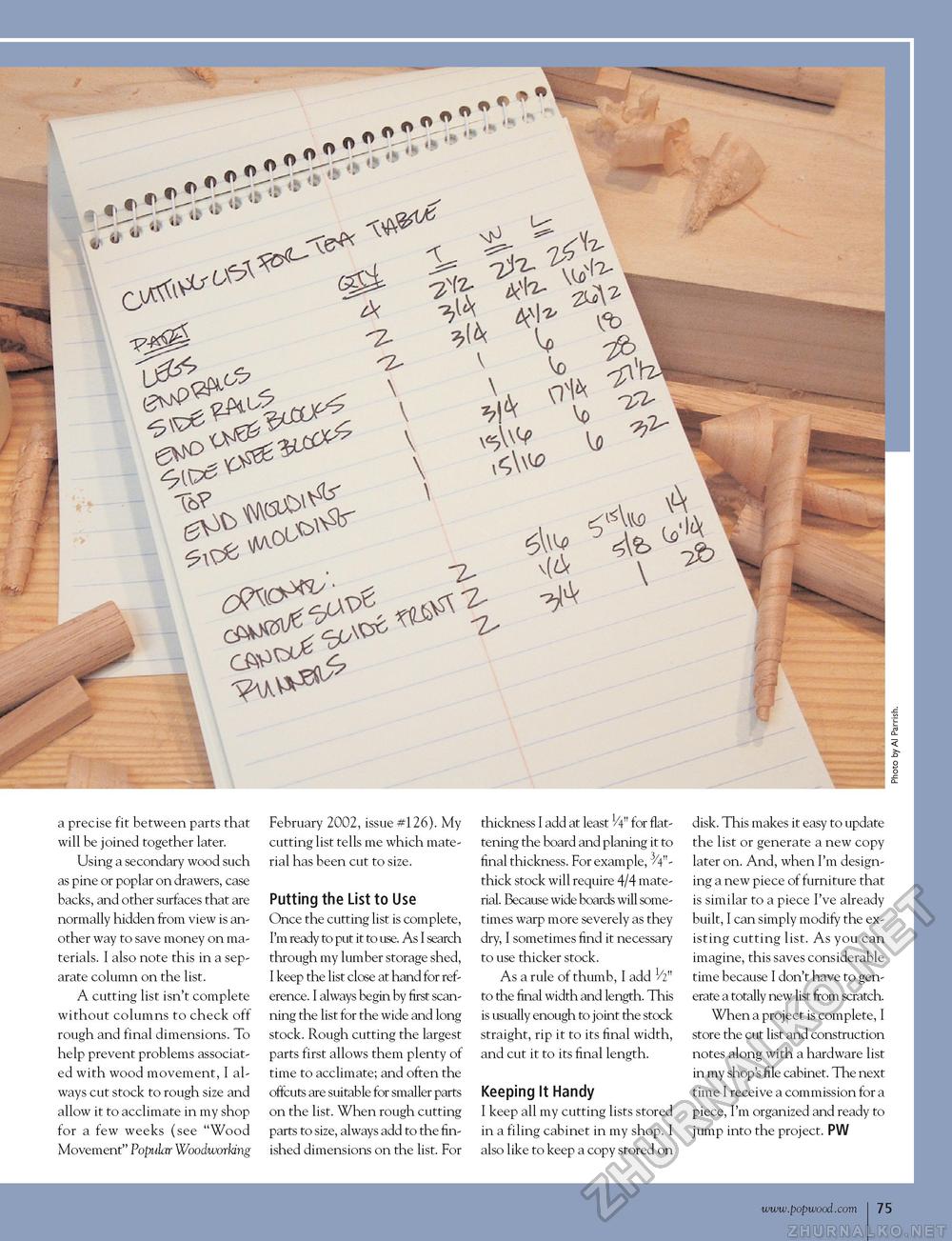Popular Woodworking 2002-04 № 127, страница 75
a precise fit between parts that will be joined together later. Using a secondary wood such as pine or poplar on drawers, case backs, and other surfaces that are normally hidden from view is another way to save money on materials. I also note this in a separate column on the list. A cutting list isn't complete without columns to check off rough and final dimensions. To help prevent problems associated with wood movement, I always cut stock to rough size and allow it to acclimate in my shop for a few weeks (see "Wood Movement" Popular Woodworking February 2002, issue #126). My cutting list tells me which material has been cut to size. Putting the List to Use Once the cutting list is complete, I'm ready to put it to use. As I search through my lumber storage shed, I keep the list close at hand for reference. I always begin by first scanning the list for the wide and long stock. Rough cutting the largest parts first allows them plenty of time to acclimate; and often the offcuts are suitable for smaller parts on the list. When rough cutting parts to size, always add to the finished dimensions on the list. For thickness I add at least 1/4n for flattening the board and planing it to final thickness. For example, ^V-thick stock will require 4/4 material. Because wide boards will sometimes warp more severely as they dry, I sometimes find it necessary to use thicker stock. As a rule of thumb, I add V2" to the final width and length. This is usually enough to joint the stock straight, rip it to its final width, and cut it to its final length. Keeping It Handy I keep all my cutting lists stored in a filing cabinet in my shop. I also like to keep a copy stored on disk. This makes it easy to update the list or generate a new copy later on. And, when I'm designing a new piece of furniture that is similar to a piece I've already built, I can simply modify the existing cutting list. As you can imagine, this saves considerable time because I don't have to generate a totally new list from scratch. When a project is complete, I store the cut list and construction notes along with a hardware list in my shop's file cabinet. The next time I receive a commission for a piece, I'm organized and ready to jump into the project. PW 75 |








